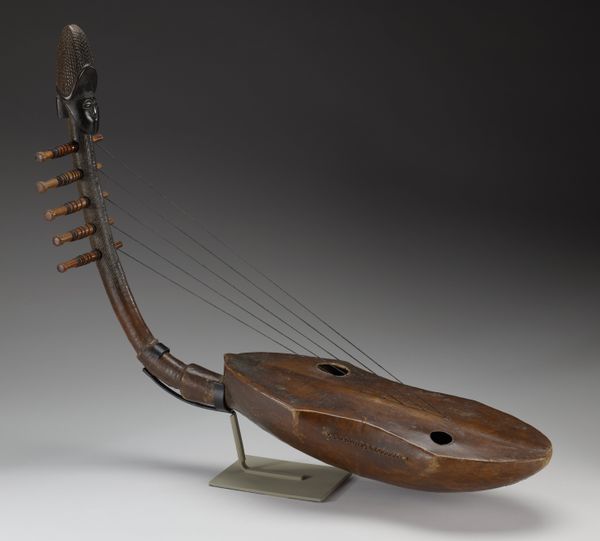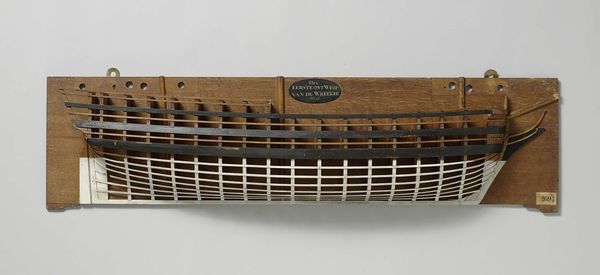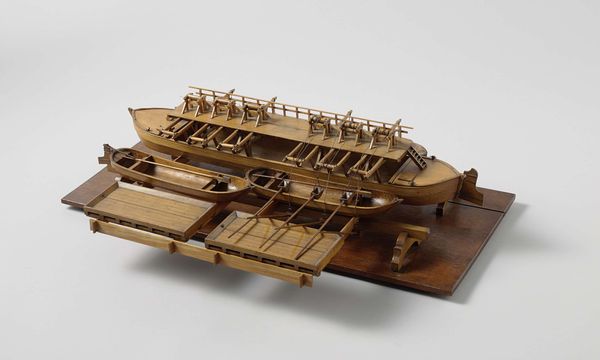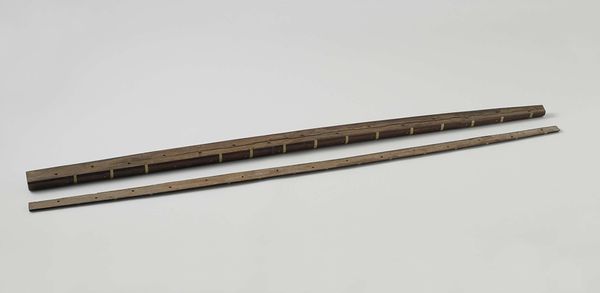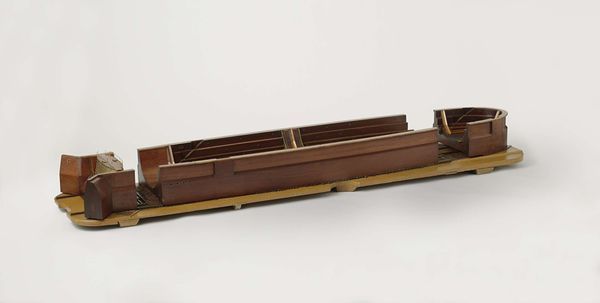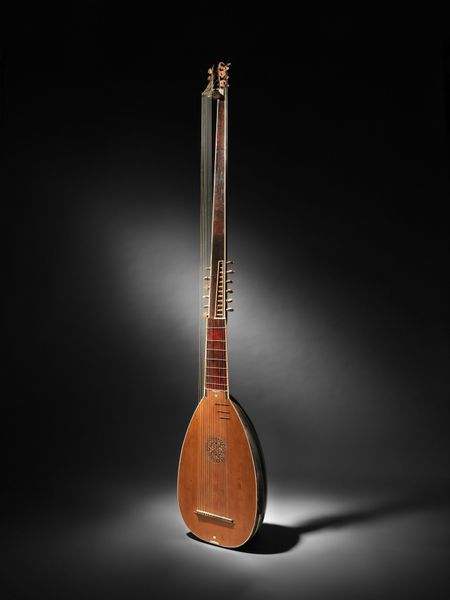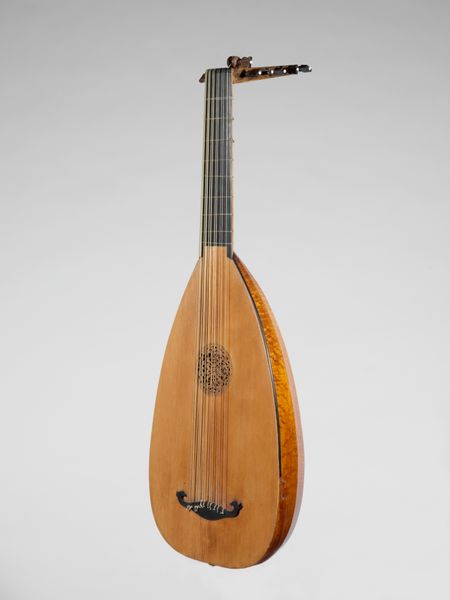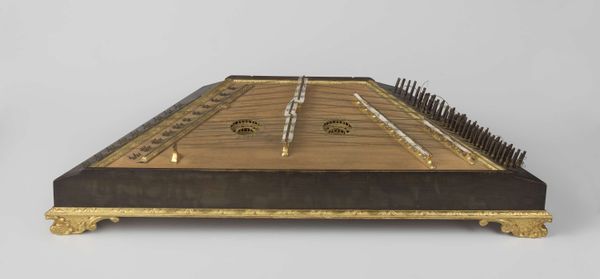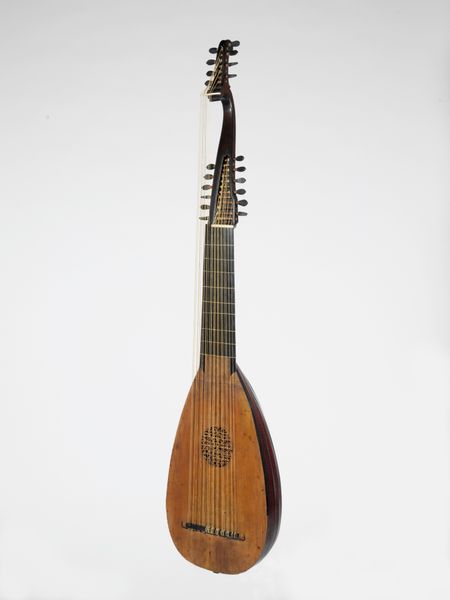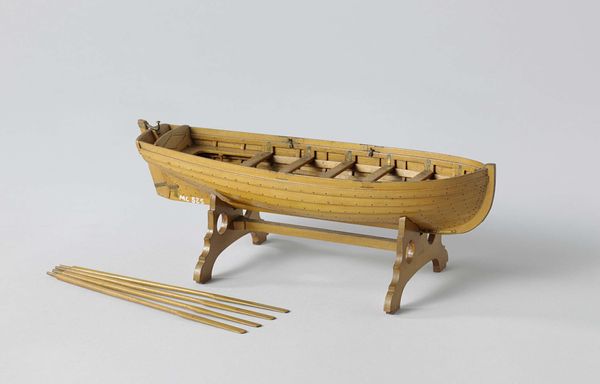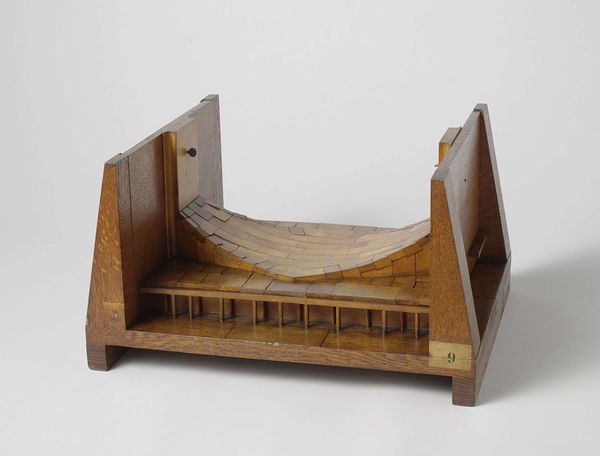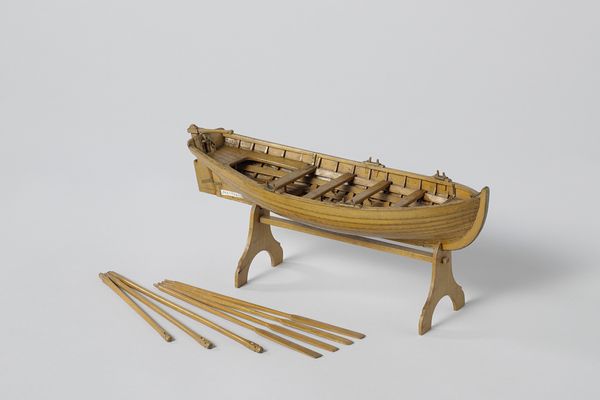
ceramic, wood
#
sculpture
#
asian-art
#
ceramic
#
traditional architecture
#
ceramic
#
wood
#
musical-instrument
Dimensions: 4 1/8 x 56 3/4 x 8 in. (10.48 x 144.15 x 20.32 cm)
Copyright: Public Domain
Editor: So, this is a Kayagum, a Korean zither, probably from the 19th century. The wood and ceramic work is beautifully inlaid, with little birds in mother-of-pearl. It has such a serene quality. What cultural stories might this instrument hold? Curator: It’s fascinating to consider the Kayagum's place within the Joseon Dynasty. Court music was highly regulated; instruments signified social standing and participation in ritual. Does knowing this affect your initial impression of its "serene" quality? Editor: Yes, it complicates it. The beauty now feels tied to ideas of power and control, maybe even exclusion. Was there a wider appreciation of these instruments? Curator: Exactly. The Kayagum transcended purely elite spaces; different forms existed. Folk versions played a crucial role in storytelling and connecting communities. The existence of two strains meant that they were charged with the complicated class and social dynamic of Korea, which shaped the visual aesthetics of the forms themselves, and thus are still seen and used differently. What does that make you think about the artist? Editor: That they were likely very aware of the cultural context in which they were making the instrument. It changes the appreciation I have for it and now I want to learn more about both versions. Curator: It's interesting how social factors deeply affected even decorative pieces, reminding us that art doesn’t exist in a vacuum. Editor: Definitely. It really shifts my understanding from something purely aesthetic to a complex object embedded in a specific history. Thanks for sharing your expertise!
